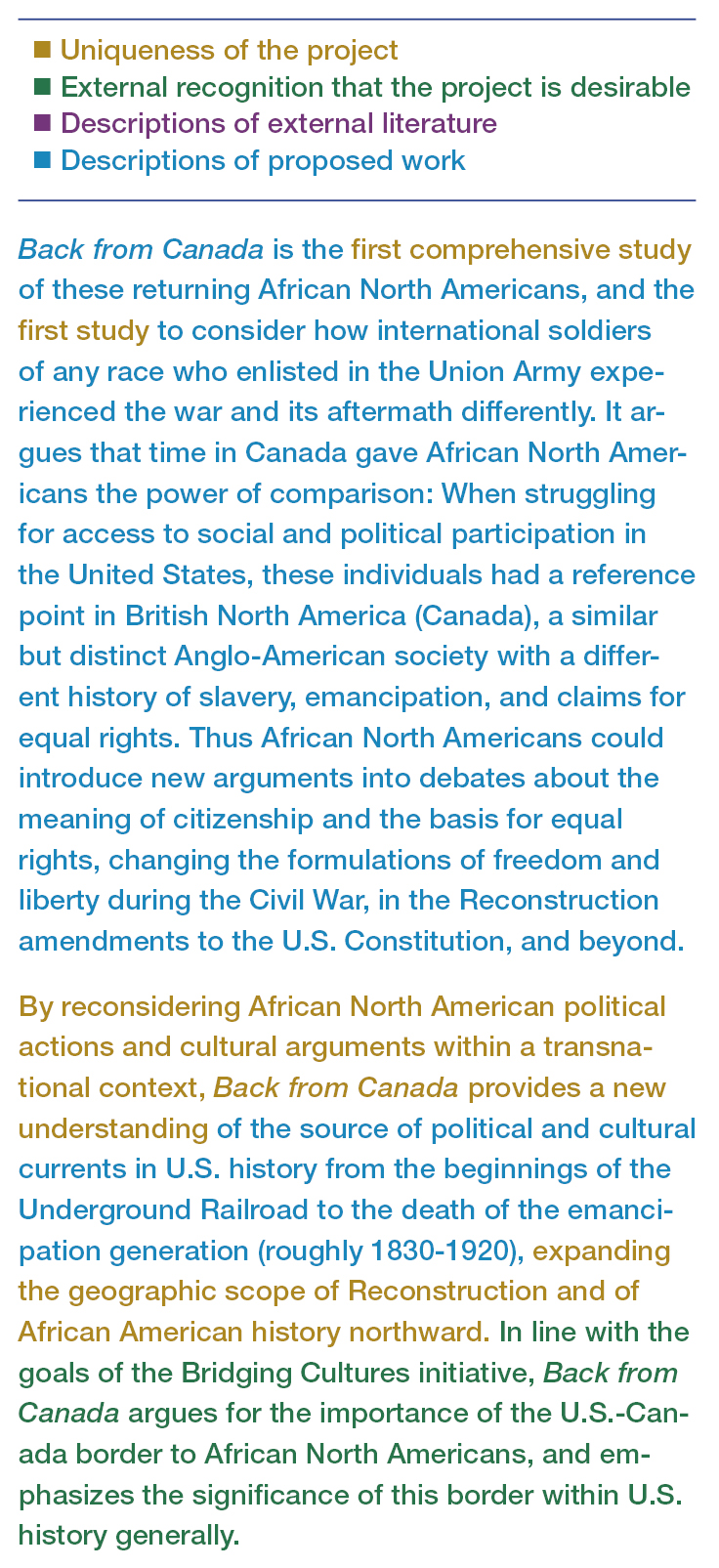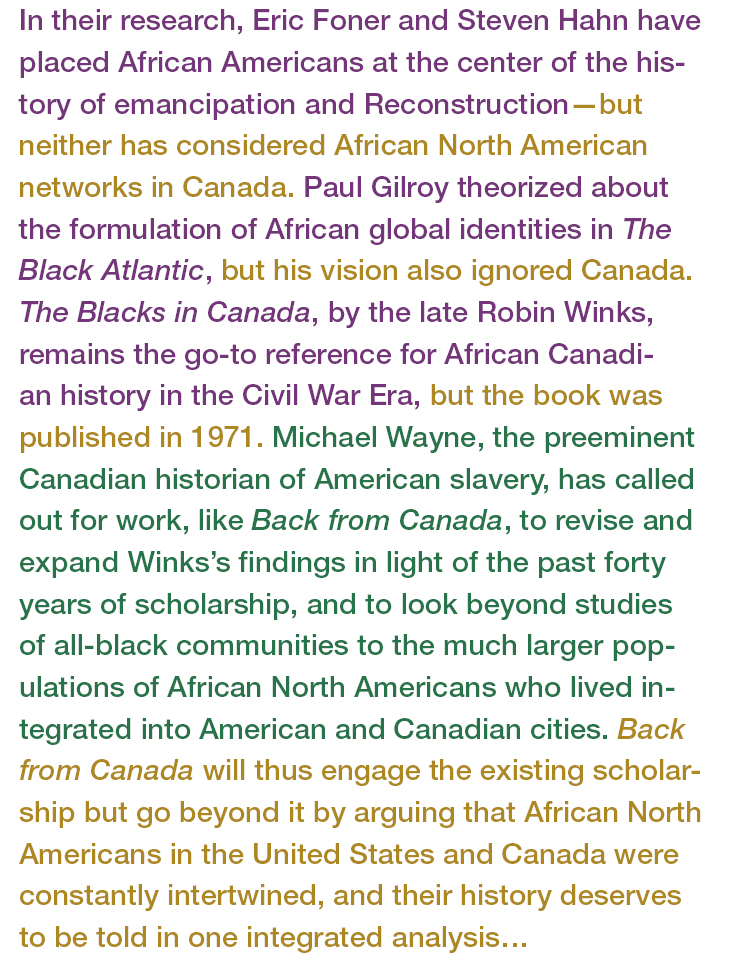First and Never
Case Study 1: A Traditional Form

 I reproduce this first as the classic example of the genre. From an initial assertion
of novelty, the passage dips into a description of the proposed project—and note the
effect of doing so. By placing all the sentences about what the project argues (that
time in Canada gave African North Americans the power of comparison...) after the
novelty claim, the reader can compare and also assign novelty to the argument. In
short, not only is the subject matter novel, but the basic thesis statement of the
project is also novel. That thesis statement is itself an argument for funding, an
answer to the question of "Why does this project matter?" This is a common thread:
novelty is actually relatively easy. By pairing novelty with merit claims, we preemptively
rebut the snippy rejoinder that perhaps the subject matter has been untouched for
decades for a reason. Instead, the project is shown to have unique merits.
I reproduce this first as the classic example of the genre. From an initial assertion
of novelty, the passage dips into a description of the proposed project—and note the
effect of doing so. By placing all the sentences about what the project argues (that
time in Canada gave African North Americans the power of comparison...) after the
novelty claim, the reader can compare and also assign novelty to the argument. In
short, not only is the subject matter novel, but the basic thesis statement of the
project is also novel. That thesis statement is itself an argument for funding, an
answer to the question of "Why does this project matter?" This is a common thread:
novelty is actually relatively easy. By pairing novelty with merit claims, we preemptively
rebut the snippy rejoinder that perhaps the subject matter has been untouched for
decades for a reason. Instead, the project is shown to have unique merits.
Several references to external authorities bolster the argument. The NEH Bridging Cultures Initiative is referenced; so too is "the preeminent Canadian historian of American slavery." He is not merely a preeminent Canadian historian of the subject matter, but the preeminent Canadian historian.
The author spends much of the opening flitting back and forth between uniqueness and merit in this manner. In the latter third, we get a literature review via exclusion. This represents a strategy for proving absence: discuss the most related works and, in this case, explicitly describe how the proposed project will fall into the holes identified in these related works. After all, when the author discusses Eric Foner and Steven Hahn, and says that "neither has considered African North American networks in Canada," this latter point is merely a description of what the author will consider. This description of absence comes after we have received a set of claims about why African North American networks in Canada deserve consideration. This also is a common thread. Before one goes about identifying absences, they generally make sure that the reader has been primed to believe that those absences matter.
Contact:
Nural Akchurin, Associate Dean for Research
College of Arts & Sciences
806.834.8838
nural.akchurin@ttu.edu
![]()
College of Arts & Sciences
-
Address
Texas Tech University, Box 41034, Lubbock, TX 79409-1034 -
Phone
806.742.3831 -
Email
arts-and-sciences@ttu.edu
